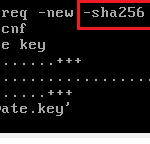There are 50 ways to do PTR resolving in bulk,and this is just one of them. It doesn’t pretend to be the fastest/coolest/best, the only thing
I can claim – it works. So use it for pleasure and work.
[perl]
# Yuri
# 19.02.2013
# this script accepts range of IP addresses to do PTr resolving for
# the range has to be in this format: startIp-endIp.startIp-endIp.startIp-endIp.startIp-endIp.
# Only answers are printed, i.e. if there is no answer nothing is printed
use warnings;
use strict;
use Net::DNS ;
my $res = Net::DNS::Resolver->new();
my $input = shift ;
$input =~ /(.+)-(.+)\.(.+)-(.+)\.(.+)-(.+)\.(.+)-(.+)/ ;
print "Resolving ptrs for the following range: $input\n" ;
print "Started working at: " . scalar gmtime . "\n" ;
my ($oct1_start,$oct1_end,$oct2_start,$oct2_end,$oct3_start,$oct3_end,$oct4_start,$oct4_end) = ($1,$2,$3,$4,$5,$6,$7,$8) ;
foreach my $oct1 ($oct1_start..$oct1_end) {
foreach my $oct2 ($oct2_start..$oct2_end) {
foreach my $oct3 ($oct3_start..$oct3_end) {
foreach my $oct4 ($oct4_start..$oct4_end) {
my $answer = $res->query("${oct1}.${oct2}.${oct3}.${oct4}") ;
if (defined $answer) {
my @ptr = $answer->answer;
foreach my $record_ptr (@ptr) {
#print " NEw " . $record_ptr->print ;
my $str = substr($record_ptr->string,rindex($record_ptr->string,’R’)+1) ;
print "$oct1.$oct2.$oct3.$oct4 " . $str . "\n";
}
}
} } }}
print "Run completed at: " . scalar gmtime . "\n" ;
[/perl]
Example run: #perl script.pl 194-194.90-90.33-33.0-255

